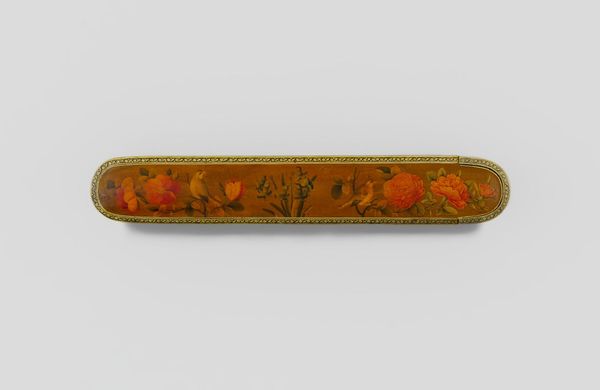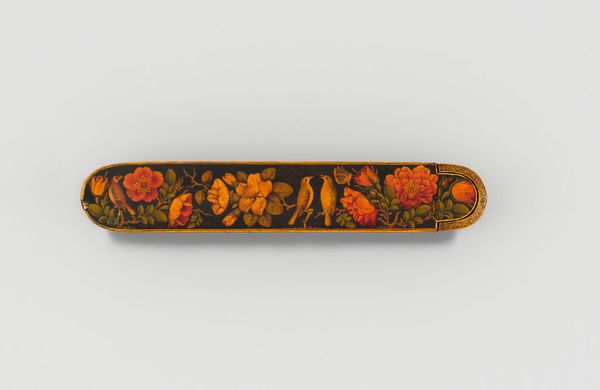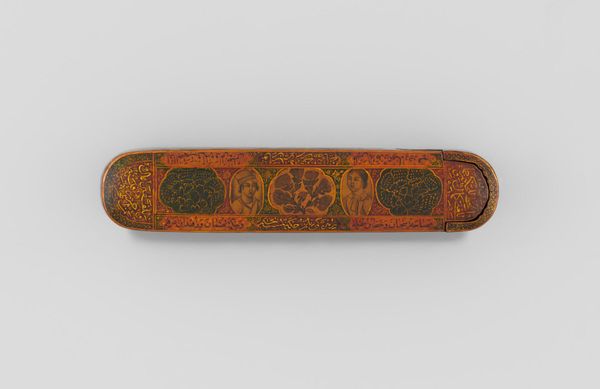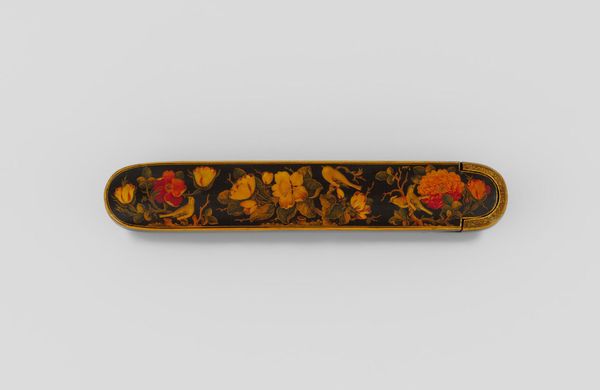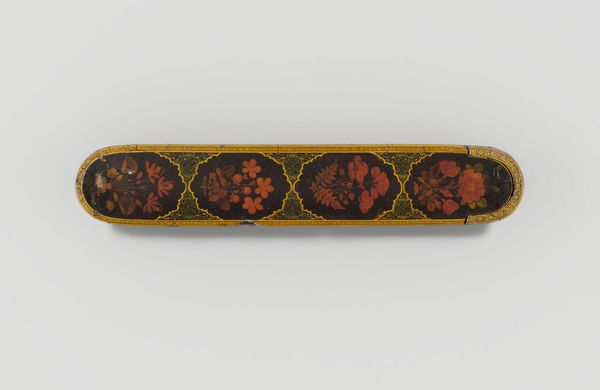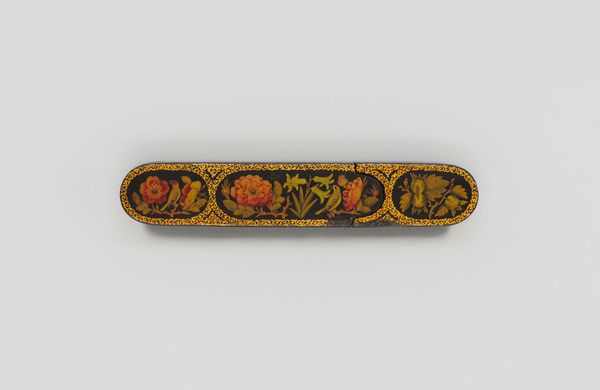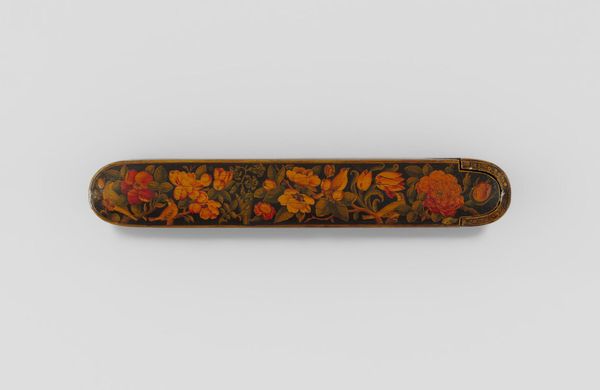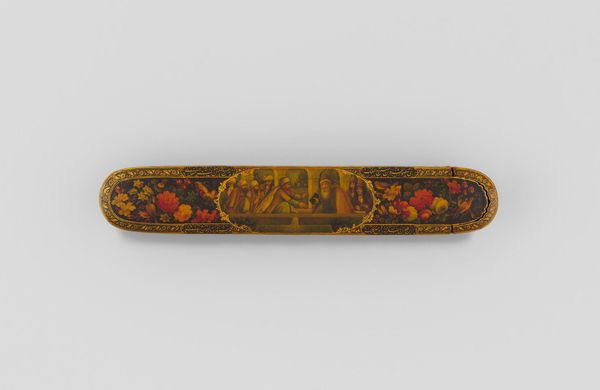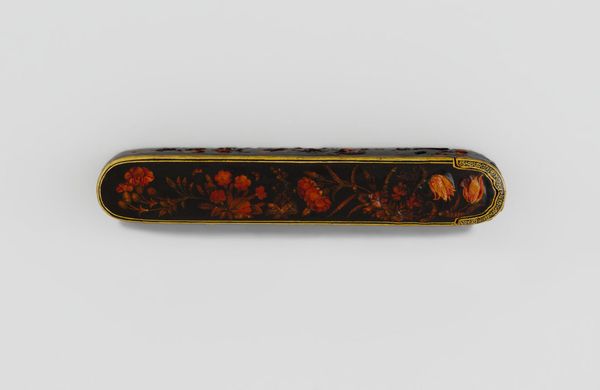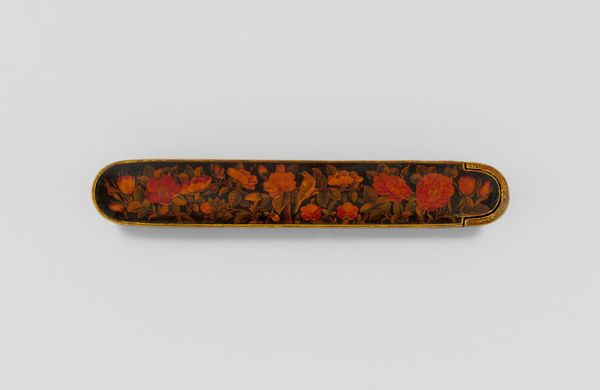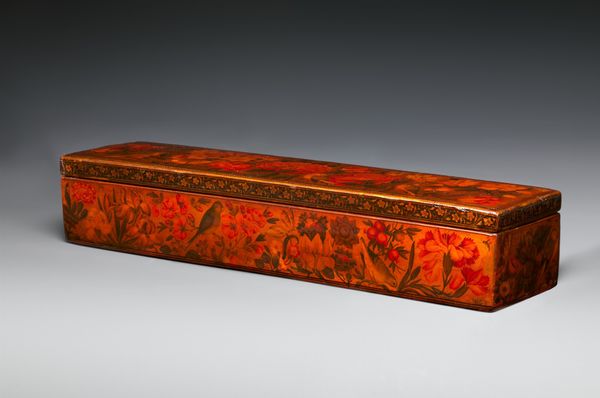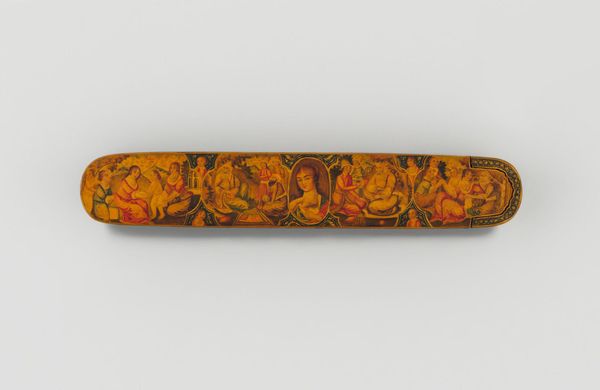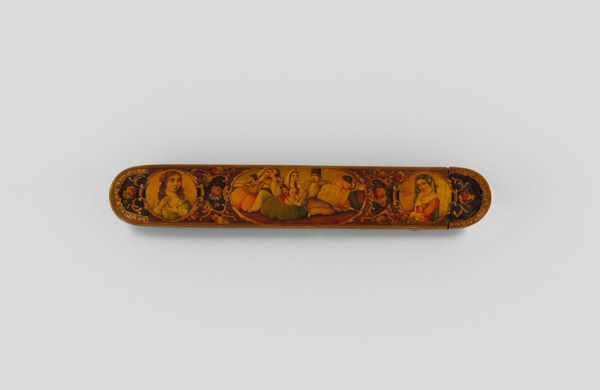
painting, wood
#
painting
#
flower
#
wood
#
islamic-art
#
decorative-art
#
miniature
Dimensions: L. 11 in. (27.9 cm) W. 2 1/4in. (5.7cm)
Copyright: Public Domain
Curator: Let’s take a moment to appreciate this pen box, crafted sometime between 1675 and 1725 by Haji Muhammad. Its ornate decorations in paint over wood demand a closer look. Editor: It does, doesn’t it? My initial reaction is of richness. There is such an intense concentration of minute details; the colors evoke something opulent and almost claustrophobic. Curator: Note how the repeated floral patterns are so typical of decorative art of the Islamic world, here combined with imagery that alludes to European landscapes. There is a visual language employed that seems to engage in conversation between artistic styles from disparate geographical regions. Editor: I can’t help but see this piece within a wider context of colonial exchange and cultural appropriation. It seems such visual blending can be deeply problematic when considering how the colonial apparatus facilitates power imbalance. Who commissions such work, and to what end? Does this blending signal a desire to emulate or perhaps something more complex: domination? Curator: But consider also the intrinsic beauty within this particular work! The interplay between the darker, almost lacquered, ground, against the bursts of orange and yellow blooms offers a sense of contained energy and visual delight. Don't we impoverish our experience when we let go of close readings and embrace only extratextual contexts? Editor: I would argue that dismissing context is itself a dangerous position, blinding us to the historical forces which brought this object into being. The decorative arts, particularly during this period, become powerful markers of identity, trade, and yes, even the complicated stories of cross-cultural pollination born of inequity. Curator: A fair point indeed. Yet I maintain a special value rests within its symmetrical arrangements and dynamic patterns. Perhaps it exists not to dominate but to bear witness. Editor: Perhaps…ultimately, I believe understanding requires us to continue to ask uncomfortable questions about each bloom’s origin and intent. Curator: And I think our encounter with this singular object reminds us of how vital differing critical perspectives are to unraveling any work’s possible narrative and emotional landscape.
Comments
No comments
Be the first to comment and join the conversation on the ultimate creative platform.

